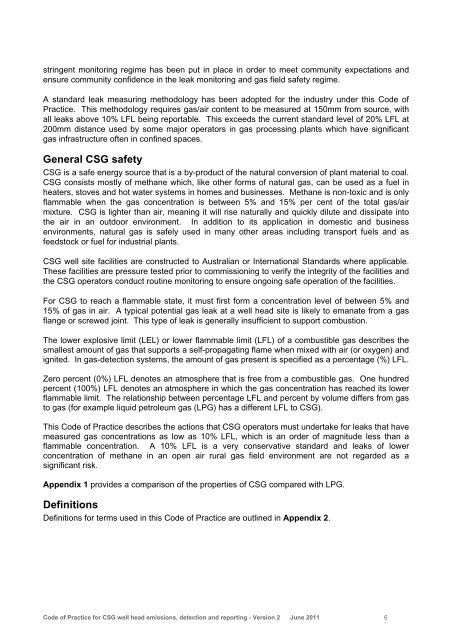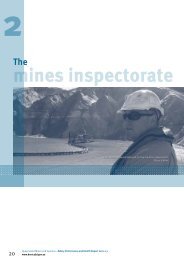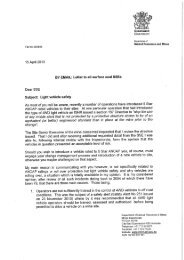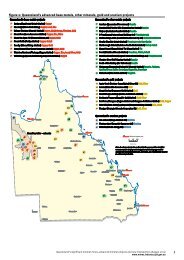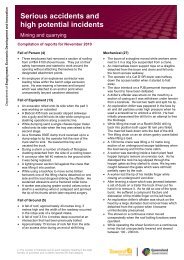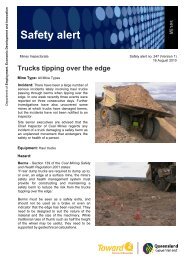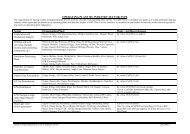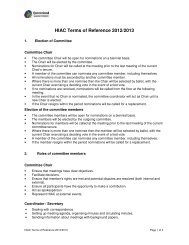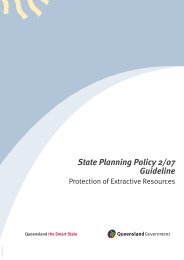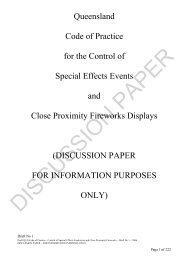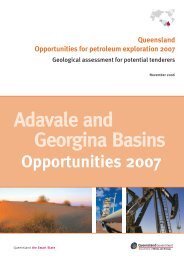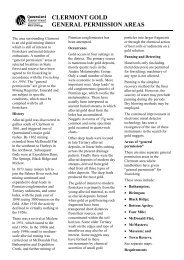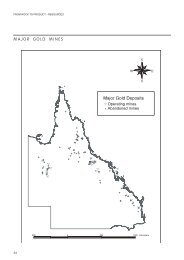Code of Practice for coal seam gas well head emissions detection ...
Code of Practice for coal seam gas well head emissions detection ...
Code of Practice for coal seam gas well head emissions detection ...
Create successful ePaper yourself
Turn your PDF publications into a flip-book with our unique Google optimized e-Paper software.
stringent monitoring regime has been put in place in order to meet community expectations and<br />
ensure community confidence in the leak monitoring and <strong>gas</strong> field safety regime.<br />
A standard leak measuring methodology has been adopted <strong>for</strong> the industry under this <strong>Code</strong> <strong>of</strong><br />
<strong>Practice</strong>. This methodology requires <strong>gas</strong>/air content to be measured at 150mm from source, with<br />
all leaks above 10% LFL being reportable. This exceeds the current standard level <strong>of</strong> 20% LFL at<br />
200mm distance used by some major operators in <strong>gas</strong> processing plants which have significant<br />
<strong>gas</strong> infrastructure <strong>of</strong>ten in confined spaces.<br />
General CSG safety<br />
CSG is a safe energy source that is a by-product <strong>of</strong> the natural conversion <strong>of</strong> plant material to <strong>coal</strong>.<br />
CSG consists mostly <strong>of</strong> methane which, like other <strong>for</strong>ms <strong>of</strong> natural <strong>gas</strong>, can be used as a fuel in<br />
heaters, stoves and hot water systems in homes and businesses. Methane is non-toxic and is only<br />
flammable when the <strong>gas</strong> concentration is between 5% and 15% per cent <strong>of</strong> the total <strong>gas</strong>/air<br />
mixture. CSG is lighter than air, meaning it will rise naturally and quickly dilute and dissipate into<br />
the air in an outdoor environment. In addition to its application in domestic and business<br />
environments, natural <strong>gas</strong> is safely used in many other areas including transport fuels and as<br />
feedstock or fuel <strong>for</strong> industrial plants.<br />
CSG <strong>well</strong> site facilities are constructed to Australian or International Standards where applicable.<br />
These facilities are pressure tested prior to commissioning to verify the integrity <strong>of</strong> the facilities and<br />
the CSG operators conduct routine monitoring to ensure ongoing safe operation <strong>of</strong> the facilities.<br />
For CSG to reach a flammable state, it must first <strong>for</strong>m a concentration level <strong>of</strong> between 5% and<br />
15% <strong>of</strong> <strong>gas</strong> in air. A typical potential <strong>gas</strong> leak at a <strong>well</strong> <strong>head</strong> site is likely to emanate from a <strong>gas</strong><br />
flange or screwed joint. This type <strong>of</strong> leak is generally insufficient to support combustion.<br />
The lower explosive limit (LEL) or lower flammable limit (LFL) <strong>of</strong> a combustible <strong>gas</strong> describes the<br />
smallest amount <strong>of</strong> <strong>gas</strong> that supports a self-propagating flame when mixed with air (or oxygen) and<br />
ignited. In <strong>gas</strong>-<strong>detection</strong> systems, the amount <strong>of</strong> <strong>gas</strong> present is specified as a percentage (%) LFL.<br />
Zero percent (0%) LFL denotes an atmosphere that is free from a combustible <strong>gas</strong>. One hundred<br />
percent (100%) LFL denotes an atmosphere in which the <strong>gas</strong> concentration has reached its lower<br />
flammable limit. The relationship between percentage LFL and percent by volume differs from <strong>gas</strong><br />
to <strong>gas</strong> (<strong>for</strong> example liquid petroleum <strong>gas</strong> (LPG) has a different LFL to CSG).<br />
This <strong>Code</strong> <strong>of</strong> <strong>Practice</strong> describes the actions that CSG operators must undertake <strong>for</strong> leaks that have<br />
measured <strong>gas</strong> concentrations as low as 10% LFL, which is an order <strong>of</strong> magnitude less than a<br />
flammable concentration. A 10% LFL is a very conservative standard and leaks <strong>of</strong> lower<br />
concentration <strong>of</strong> methane in an open air rural <strong>gas</strong> field environment are not regarded as a<br />
significant risk.<br />
Appendix 1 provides a comparison <strong>of</strong> the properties <strong>of</strong> CSG compared with LPG.<br />
Definitions<br />
Definitions <strong>for</strong> terms used in this <strong>Code</strong> <strong>of</strong> <strong>Practice</strong> are outlined in Appendix 2.<br />
<strong>Code</strong> <strong>of</strong> <strong>Practice</strong> <strong>for</strong> CSG <strong>well</strong> <strong>head</strong> <strong>emissions</strong>, <strong>detection</strong> and reporting - Version 2 June 2011 6


